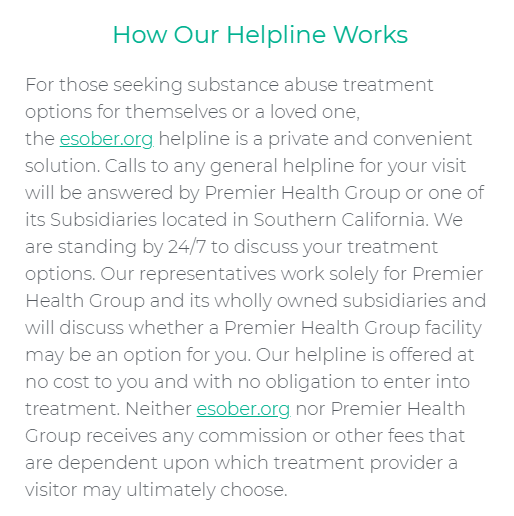The road to recovery from drug addiction is long and tumultuous. Ask any recovering addict, and they’ll tell you that things get harder before they get easier. This is often why many individuals would return to their addictions rather than push through with the recovery process. And one thing that makes recovery so difficult is the effects of post-acute withdrawal syndrome (PAWS).
Despite its prevalence, PAWS isn’t something that’s often talked about when we talk about recovery. This lack of information just makes things even more difficult for recovering addicts. In the hope of aiding in the addiction recovery process, we thought it would be helpful to shed some light on PAWS. If this is something you’re interested in or something that you find beneficial, read on for an in-depth look at PAWS!
What Is PAWS?
PAWS refers to the symptoms that occur when a person stops taking a substance cold turkey. Unfortunately, recovering addicts just have to deal with withdrawal as there are very few ways to circumvent its effects. To truly understand the syndrome in question, we have to talk about acute withdrawal because PAWS starts off as acute withdrawal.
Acute withdrawal is different from other forms of withdrawal as its effects are mostly physical in nature. This usually manifests as symptoms that closely resemble the flu. Acute withdrawal occurs around one to two weeks after a person stops taking a particular substance. While this phase is manageable, it is only the start of what’s to come as it is a prelude to the physical and psychological effects of PAWS that can last up to two years.
What Are the Symptoms of PAWS?
How will you know once PAWS begins? Well, there are distinct symptoms that, while similar to acute withdrawal, are exclusive to PAWS. What’s tricky about this syndrome is that its symptoms can wane and return over time, meaning that recovering addicts never really know once they’ve gotten over PAWS for good. Here are the symptoms associated with PAWS:
- Erratic mood swings
- Anxiety and depression
- Inability to focus or think
- Anhedonia or the general loss of interest in activities
- Sensitivity to stress
- Obsessive thoughts
- Fatigue
- Insomnia
- Alcohol or drug cravings and dreams
Keep in mind that these symptoms vary in severity depending on the individual and their substance abuse history. Individuals who have abused substances for longer periods tend to have more severe bouts of PAWS. Fortunately, the symptoms will also dissipate over time, but this will again depend on the individual’s substance abuse history.
Due to how long PAWS lasts, it can push individuals to slip back into substance abuse rather easily, and this can derail a person’s track to recovery. If the symptoms become unmanageable, then it may be worth exploring options involving getting professional help. If you need help doing this, you can find local addiction centers and programs for addiction treatment on our website to get the help that you need!

Why Does PAWS Occur?
One thing that you have to understand about substance abuse is that the human body adapts to functioning with the substance in its system. This means consuming a substance for extended periods of time will temporarily alter one’s body and brain chemistry.
What this essentially means is that a person’s body also has to relearn how to function without the substance. This builds a dependence on the substance. This dependence is one of the main reasons people experience withdrawal symptoms. This is also why the severity of the symptoms is heavily impacted by the degree of substance abuse and the extent of an individual’s usage of the substance.
Another reason behind PAWS is linked to why people abuse substances. Now, it’s important to understand that some substances are also used to deal with emotional and psychological issues. They are used as a numbing agent that pushes emotions down to help them cope with stress or anxiety. But when the substance is taken out of the equation, individuals now have to learn how to deal with these emotions on their own. This can get rather overwhelming for some people, causing them to experience PAWS.
Lastly, a person’s relationship with substance abuse may also have been masking physical and nutritional issues. Once an individual stops using substances, these issues rise to the surface and aggravate the already unpleasant symptoms that come with PAWS.
What Are the Different Types of PAWS?
With the understanding of why PAWS occurs, it’s not at all surprising that different substances have different symptoms and qualities when it comes to the syndrome in question. Here are common substances and their respective withdrawal symptoms:
- Alcohol: Alcohol addiction has some worrisome withdrawal symptoms attached to it that aggravate PAWS. Individuals who have developed a dependence on alcohol may suffer seizures and psychosis when stopping alcohol consumption.
- Antidepressants: While antidepressants aren’t really a commonly abused substance, they will drastically alter an individual’s brain chemistry. It changes the levels of serotonin in a person’s brain, which could leave lasting effects even after a person ceases the use of the substance.
- Antipsychotics: Antipsychotics inhibit hallucinations by altering dopamine receptors. Misusing antipsychotics for long periods will cause an individual to exhibit erratic mood swings during the withdrawal period.
- Benzodiazepines: Even when used correctly, benzodiazepines have a high risk of addiction. This is why they are only prescribed for short periods of time. Benzodiazepine withdrawal is similar to the symptoms of panic disorders. This, on top of PAWS, makes it quite difficult to quit the medication.
- Opioids: It can be quite difficult to quit opioids, which is why it should be a substance that’s tapered off properly instead of quitting cold turkey. Opioids aggravate acute withdrawal symptoms and PAWS, as they can heighten substance cravings, fatigue, and cognitive impairment.
- Marijuana: Marijuana is typically used to alleviate stress, anxiety, and depression. And while there are very few physical withdrawal symptoms linked to the drug, extreme cases of substance can cause individuals to experience insomnia due to marijuana withdrawal.
- Stimulants: Stimulants such as Adderall and cocaine can cause extreme withdrawal symptoms like paranoia, tremors, and aggression. In some cases, it can also cause extreme fatigue and depression.
How to Deal with PAWS?
While PAWS can be quite difficult to deal with, there are ways to make it more manageable. The important thing to understand is that it’s all right to ask for help. In fact, in this situation, it is almost a requirement to help ensure proper recovery. Despite the challenges that addiction presents, it’s something that can be managed with the proper guidance and support.
Having a good support group can make dealing with the cravings easier as individuals who are overcoming these issues can be a guide to other recovering addicts. Counseling is also a great way to deal with the syndrome. If you are looking for more information on support groups and professional counseling, it would be best to refer to your local addiction centers.
Conclusion
While the road to recovery may be tough for any addict, it’s something that needs to be undertaken to live a long and healthy life. Understanding the intricacies of addiction will surely help with dealing with its effects. We hope this information proves to be useful for those of you who know people suffering from substance addiction or are suffering from PAWS yourself. Feel free to refer back to this information as needed!
Sources:
https://www.semel.ucla.edu/dual-diagnosis-program/News_and_Resources/PAWS




